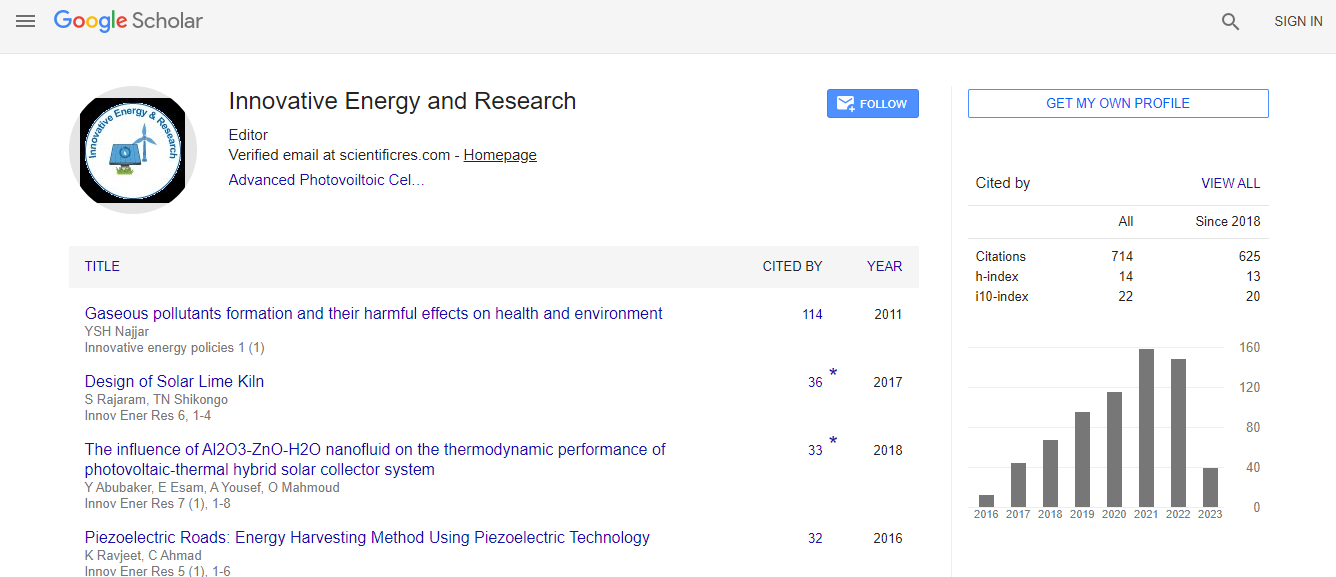Our Group organises 3000+ Global Events every year across USA, Europe & Asia with support from 1000 more scientific Societies and Publishes 700+ ������ Journals which contains over 50000 eminent personalities, reputed scientists as editorial board members.
������ Journals gaining more Readers and Citations
700 Journals and 15,000,000 Readers Each Journal is getting 25,000+ Readers
Citations : 712
Indexed In
- Google Scholar
- Open J Gate
- Genamics JournalSeek
- RefSeek
- Hamdard University
- EBSCO A-Z
- Publons
- Euro Pub
- ICMJE
Useful Links
Recommended Journals
Related Subjects
Share This Page
Asymmetric rolling of polycrystalline metals: Modification of microstructure and mechanical properties
20th International Conference on Advanced Energy Materials and Research
A. Uniwersal, S. Wronski, K. Wierzbanowski, M. Wrobel, M. Wronski and B Bacroix
AGH University of Science and Technology, PolandLSPM-CNRS, Universite Paris 13, France
Posters & Accepted Abstracts: Innov Ener Res
DOI:
Abstract
Asymmetric rolling process is a subject of many research works in the last years. In this kind of rolling some technological parameters can be modified, like: normal force and torque, sample shape (by bending) and power requirements. The material properties are also noticeably modified. An important shear deformation, characteristic for this process, leads to texture rotation, microstructure refinement and increase of material strength. Asymmetric rolling can be realized by a modification of existing rolling mills, therefore its industrial application is possible at a relatively low cost. The aim of the present study was to characterize this process and resulting material modifications of face centered cubic (fcc) and hexagonal close packed (hcp) metals: aluminum, copper and titanium. The cases of low and high deformations were examined. The electron backscatter diffraction (EBSD), X-ray diffraction (XRD), calorimetry and microhardness measurements were performed. Texture and mechanical characteristics were studied using a crystal deformation model and finite element method (FEM). The following material and process modifications were found as a result of asymmetric rolling: sample bending, which can be partly controlled; decrease of mill load and an increase of the average rolling torque; increase of microhardness mechanical strength; increase of energy released during recrystallization; texture rotation around transverse direction; decrease of the average grains size (persisting in some extent also after recrystallization) and formation of more fragmented grains and; modification of lattice misorientation distributions. Recent Publications: 1. J. Jiang, Y. Ding, F. Zuo, A. Shan (2009) Mechanical properties and microstructures of ultrafine-grained pure aluminum by asymmetric rolling, Scripta Mater., 60:905–908 2. J. Liu, R. Kawalla (2012), Influence of asymmetric hot rolling on microstructure and rolling force with austenitic steel, T. Nonfer. Metal Soc., 22:388-391 3. S. Wronski, B. Ghilianu, T. Chauveau , B. Bacroix (2011), Analysis of textures heterogeneity in cold and warm asymmetrically rolled aluminium, Mater. Charact., 62:22-34 4. A. Uniwersał, M.Wróbel, K. Wierzbanowski, S. Wroński, M. Wroński, I. Kalemba-Rec, T. Sak, B. Bacroix (2016) Microstructure, texture and mechanical characteristics of asymmetrically rolled polycrystalline copper, Mater. Charact. 118:575–583 5. M. Wroński, K. Wierzbanowski, M. Wrobel, S. Wronski, B. Bacroix (2015) The effect of rolling asymmetry on selected properties of grade 2 titanium sheet, Met. Mater.-Int., 21 (2015) 805-814.Biography
K Wierzbanowski has his expertise in the field of mechanical properties of metals, residual stresses and crystallographic textures. He developed crystalline models for elastoplastic deformation and for recrystallization of metallic materials. He performed also analysis and interpretations of experimental results in the domain of X-ray diffraction, electron backscattering diffraction (EBSD) and mechanical testing. He gives academic lectures in the field of General Physics and Material Science. He is author of 180 publications and of numerous presentations in conferences dedicated to material science.
E-mail: wierzbanowski@fis.agh.edu.pl

